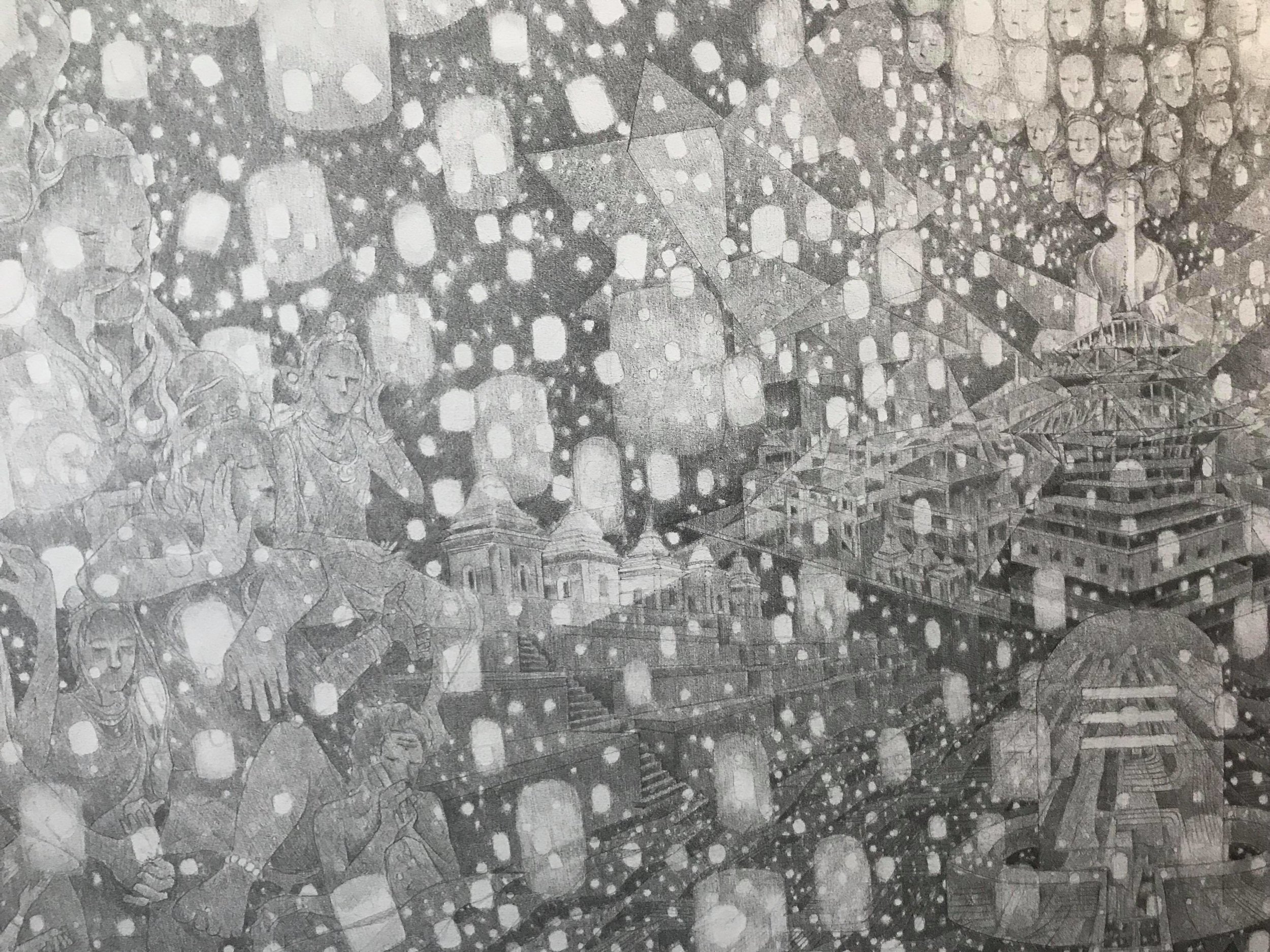spirits II
Visually the work is set in a re-arranged version of Pashupatinath, a Holy temple in Nepal. The key features that i was trying to weave around are the holy river of Bagmati set as a carpet almost inviting you , the overwhelming amount of souls flying away and the spirit guardians with their eyes closes and lips removed depicting complete and utter acceptance.
Many of the visual ideas derive from native, eastern, cultural experience. However, much of the thought processes is also an intermingling of Hinduism, Jainism, alongside mild references to the ontological branches of metaphysics from the greek philosophies (while steering clear of the esoteric literature).
Devdutt Patnaik is a modern mythologist and his take on the differences in eastern and western mythology is rather revealing . Me being a teenager immigrant, i can relate to it . Our behaviours are deeply rooted to our culture and culture is in somewhat way, designed by nature.His interpretation of Tirthankara and Chakravarti has been very relevant here. Chakravarti, despite being the ruler of everything is placed a step under Tirthankara, the ruler of nothing. The ruler of nothing is no longer measurable in the physical, material, life or death.
Sadhus in the Phashupathniath who witness death everyday. They lead spartan lives, detached from: materials, possession, ego and emotions, eating only enough to get them through the day. They view death in its cyclical form, and in this way believe that they are one with nature and universal consciousness - something the mind finds difficult to accept.
My work tries to see death from the Sadhus’ perspective: a commingling of souls and spirits returning to become part of the universe (almost like in a spiritual festival of some kind),rather than an isolated and singular incident.It tries to capture this interplay from my level of understanding.




